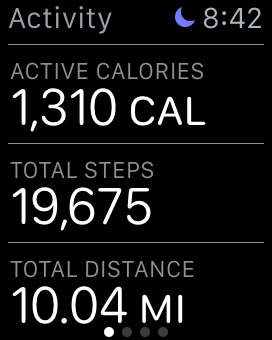125
4
100
1200
125 pounds was the weight I thought was perfect for me.
4 was the size of pants I thought I should wear.
100 was how many calories I burned in one mile of running, approximately.
1200 was the number of calories I thought I should eat in a day.
Those numbers have been burned onto my brain since I was in my early twenties - maybe earlier.
We have relationships in every part of the fitness process - we have a relationship with exercise, we have a relationship with food and many of us, especially women, also have a relationship with the numbers. When I was a freshman in high school, my friend Jodi told me that if we multiplied our height, then that was our ideal weight.
My ideal weight came from a friend who heard it from someone who read it somewhere and I thought that number was gospel.
At 5’5, my ideal weight was 125 pounds. Less was okay, and throughout high school I weighed 115 pounds. But when I went off to college and gained a little weight. I was ok as long as I weighed no more than 125 pounds. Though I didn't proclaim to anyone that I was on a diet, the minute my weight went over 125, I ate nothing but salads and was strict about staying below 1200 calories, which was another number I soaked up from somewhere I can't remember. I also knew that running burned roughly 100 calories per mile, so I'd run three or four miles.
This was my unwritten rule for myself.
That is the unwritten rule for so many of us.
The rule of my ideal weight exploded in my face in my early thirties when I took up strength training. I was feeling stronger and enjoying the workouts but I wasn’t prepared for the scale to go in the opposite direction. Instead of going from 130 pounds to 125, I went to 135. Then to 140.
Intellectually I knew what was going on - I knew that muscle weighed more than fat and blah, blah, blah, science. I knew that.
But I still could not reconcile this new number. Because the old one, as bogus as it was in its foundation (shockingly, not everything I learned in high school locker rooms was true…) was absolutely seared into my brain.
Seeing a number on the scale that was more than my ideal weight made me feel shameful. I felt bad about myself, despite what I knew intellectually.
For many of us, certain numbers bring elicit memories and emotions.
Maybe it was how much you weighed on your wedding day or when you graduated from college or some other positive time in your life. The ideal number in our head triggers positive memories or experiences. And that’s what we want.
For many others, there is a goal weight in mind - those who have struggled with weight all of their lives might have a number in mind as an end to the journey.
Once I hit this weight….fill in the blank.
Once I hit this weight I’ll be happy. Once I hit this weight I can stop going to the gym seven times a week. Once I hit this weight….
And it’s not enough to intellectually understand that it’s ok if your weight goes up when your muscle mass goes up and your body fat goes down. Because sometimes you can tell yourself over and over again that it’s ok, but you never really buy what you’re trying to sell yourself.
Developing a relationship with your body that doesn’t have numbers is so. hard. to. do.
It is so hard.
Because we sure as hell don't like the other feedback we rely on, which for most of us is mirrors. Just this morning I got up, took one look at myself in the mirror, and was thoroughly disappointed with what I saw. I haven't trained consistently because of injury, so I feel sluggish and quite frankly, didn't like what I saw in the mirror.
I share that mostly because I know there are so many out there who feel the same way.
So what do we do? With the numbers and the feedback?
We work on it. I know - that work is hard and complicated. But we create awareness where we can, we remind ourselves, at every opportunity, that we are more than a number.
We ask for help.
We offer help.
We remind each other that we're beautiful.
We lift each other up.
In the words of the ladies over at Girls Gone Strong - "strong women lift each other up."







